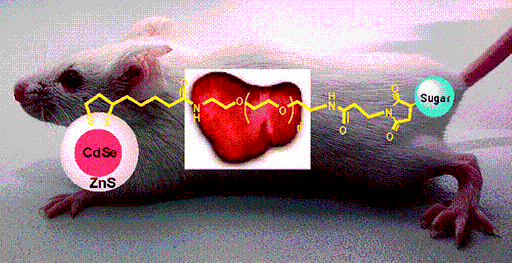New Type of Sugar-Coated Quantum Dots for Drug Delivery Developed
By LabMedica International staff writers
Posted on 18 Mar 2009
Scientists are reporting an advance that could help utilize the much-touted potential of "quantum dots” nanocrystals that glow when exposed to ultraviolet light--in the treatment of cancer and other diseases. Posted on 18 Mar 2009
The investigators, from the department of biomolecular systems at Max-Planck-Institute of Colloids and Interfaces (Potsdam-Golm, Germany) and the Freie Universität Berlin Institute of Chemistry and Biochemistry (Germany) published the first ever study in the February 18, 2009, issue of the Journal of the American Chemical Society (JACS) showing that giving quantum dots an icing-like cap of specific sugars makes these nanoparticles gather in the liver but not other parts of the body. That selective targeting could be used to deliver anticancer drugs to one organ, without causing the body-wide side effects that occur with existing cancer drugs, they suggest.

Image: Quantum dots (QDs) capped with D-mannose, D-galactose, and D-galactosamine have been synthesized. The stable, high quantum yield fluorescence of QDs was exploited to study specific carbohydrate-protein interactions in vitro and in vivo (Photo courtesy of The American Chemical Society).
In the new report, Prof. Seeberger and colleagues noted that quantum dots, approximately 1/5,000 of the width of a human hair, are used in solar cells, medical diagnostic imaging, and electronics. Scientists believe these particles also show potential for drug delivery for treating cancer and other disorder. However, researchers still have not found an ideal way to target these dots to specific tissues or organs to maximize their effectiveness and limit toxicity.
The scientists reported the development of a new type of quantum dot coated with certain sugar molecules that are attracted to receptors in specific tissues and organs. In the study with laboratory mice, the scientists coated quantum dots with either mannose or galactosamine, two sugars that accumulate selectively in the liver. The sugarcoated dots became three times more concentrated in the mice livers than the regular dots, demonstrating their higher specificity, according to the researchers.
Related Links:
Max-Planck-Institute of Colloids and Interfaces














